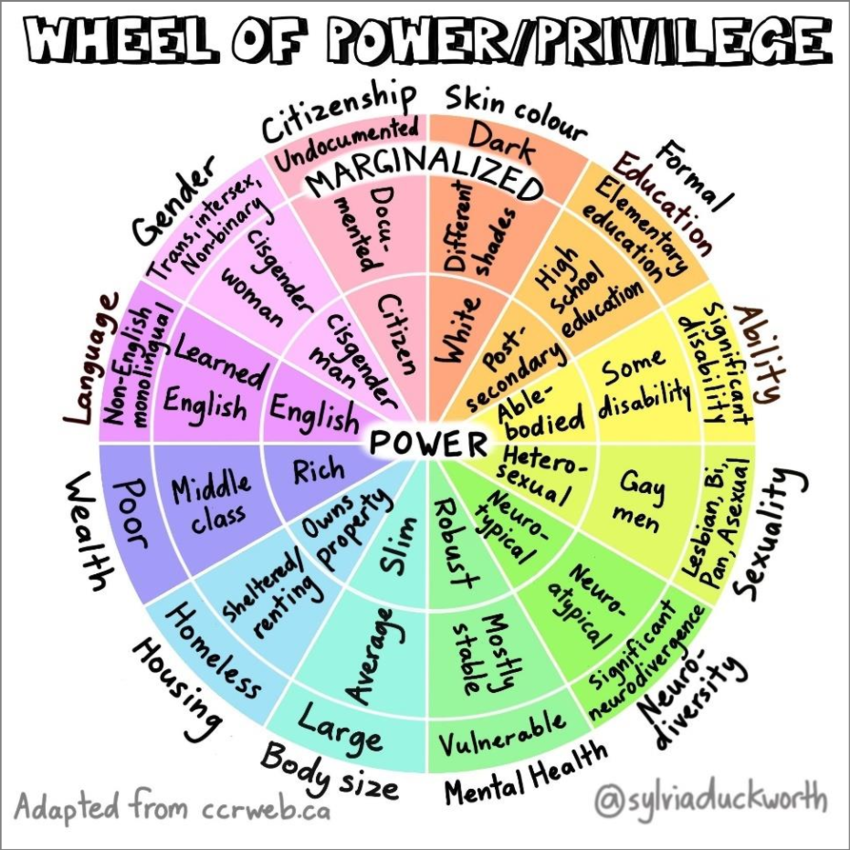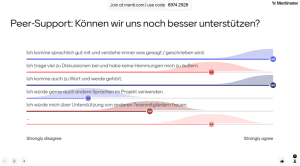4. Crafting Third Spaces with Literature

Inherently, VE projects bring together individuals from various backgrounds with multiple perspectives. One way to meaningfully increase this multiperspectivity is to have students work with relevant literary texts. While Wolfgang Hallet’s notion of “third space” (Freitag-Hild 2018: 167) is intended to apply primarily to foreign language classrooms, there is value in transferring it to VE contexts.
Essentially, the approach frames the educational setting – be it only a local group of learners or all participants engaged in a VE project – as a space in which an “interplay of texts and cultures” (Hallet 2002 in Freitag-Hild 2018: 167) lead to cultural contact. The texts learners are confronted with within the (virtual) classroom can cause them to “cope with irritations and learn to reflect on the concepts they bring to the text” (Bredella/Delanoy 1996: xiv in Müller-Hartmann 1999: 169). In other words, learners not only engage with authentic cultural artefacts, but can also be made aware of their own ways of viewing the world, including preconceived notions based on limited knowledge.
The following introduces three selected literary texts that can be implemented to learn and negotiate different vantage points at the controversial discourse surrounding the Israeli-Palestinian conflict. The chapter closes with a reflection activity to help you choose fitting literary texts for your VE project.
4.1 I Saw Ramallah by Mourid Barghouti
Potential learning activity:
Students read the full section cited by Chimamanda Ngozi Adichie in her TED Talk, ‘The Danger of a Single Story’, near the end of Barghouti’s book. They focus on the final, personal example provided by Barghouti and research what, according to the author, may have occured before the events that happened “secondly”:
“It is enough to start the story with “Secondly”, for my grandmother, Umm ‘Ata, to become the criminal and Ariel Sharon her victim. […] The Israelis occupy our homes as victims and present us to the world as killers” (Barghouti 2000: 178).
4.2 Mornings in Jenin by Susan Abulhawa
Potential learning activity:
The book’s appendix contains a reading group guide including nineteen discussion questions. Drawing on the third proposed question, students read the first three pages from chapter 4, “As They Left”, and analyze the depiction of the childhood friendship between the Arab Hasan Abulheja and the Jew Ari Perlstein in 1947. Next, they discuss and research potential obstacles to such a friendship in the current day.
Excerpt from the novel, chapter four, “As They Left. 1947 – 1948”, pages 22-24:
Ari Perlstein left to begin his medical studies shortly after attending Hasan and Dalia’s wedding, but although each had gone his own way, the two friends did not completely lose touch with each other. […] The weather was clear and crisp on the afternoon when Hasan and Ari left the formalities of mourning […] Hasan looked about him at the farmland he would one day inherit. It looks like we’ll have good crops this year. […]
“Hasan, they’re going to take land. They’ve launched a campaign across the world calling Palestine ‘a land without a people.’” […] “How do you feel about it? I mean, making a Jewish state here,” Hasan asked, squeezing an olive between his fingers to gauge the harvest they might have in November. […]
“I don’t know, Hasan.” Ari lowered his eyes […] “I’m a Jew. I mean, I think it’s wrong. But you don’t know what it was like before.” Ari’s voice began to tremble. “It killed us, what happened, even though we escaped. Have you ever noticed how empty my mother’s eyes are? She’s dead inside. Father, too. Hasan, you don’t know what it was like. And now we aren’t sure if we’ll be safe. […] You’re like a brother to me. I’d do anything for you or your family. But what happened in Europe…” Ari’s words fated into the awful images they’d both seen of death camps. […]
“Exactly, Ari. What Europe did. Not the Arabs. Jews have always lived here.” […] Hasan was not as angry as he sounded because he understood Ari’s pain. He had read about the gas chambers, the camps, the horrors. And it was true: Mrs. Perlstein’s eyes looked as if life had packed up and left them long ago.
Across three exchange projects conducted in 2024 (with participants from Brazil, Estonia, Germany, Ireland, Israel, and Türkiye), students left the following remarks.
- The excerpt from the novel offers a fresh perspective that is rarely shown in mainstream media.
- The text references the Holocaust and acknowledges the severe trauma of its survivors.
- It depicts a positive example of co-existence and friendship across religions.
- The text contrasts the short-term hopes of Hasan – the next harvest on his family land – with the long-term worries of his friend Ari – the displacement of local inhabitants by settlers.
- It shows the two characters as empathetic towards each other, with both wanting a safe place to live.
- Today, the many conflicts, language barriers (Arabic/Hebrew), and the often geographically separated ways of living are likely challenges for such friendships to emerge.
4.3 Apeirogon by Colum McCann
Potential learning activity:
Learners research the personal histories of Bassam and Rami and collect further peace initiatives, such as the Parents Circle. They discuss the role of personal relationships for restorative justice and reconciliation efforts.
4.4 Choosing Adequate Literary Texts
Choosing authors and texts to adequately offer an assemblage of different perspectives on controversial matters can be very challenging. Crucially, the first principle of the Beutelsbach consensus requires educators to avoid biased representation.
One possible set of characteristics that you can consult is the Wheel of Power and Privilege (Duckworth 2020). It is a “visual representation of how power, privilege, and social identities intersect” (Kearney 2022). You will notice that the positionalities of the authors of and/or characters from the aforementioned literary texts can be located in divergent proximity to positions of power depending on the chosen dimension.
6. Reflection Activity: Positionalities in your (educational) context
Reflect on your own placement in the Wheel of Power and Privilege as well as those of your students and the authors of the texts they have been consuming.
Ask yourself if any changes to, for example, your choice of authors may be helpful in inviting a more diverse set of voices and perspectives to your education.

All illustrations on this page by @storyset (https://www.freepik.com/author/stories)
This work © 2025 by Fabian Krengel is licensed under CC BY-NC-ND 4.0
